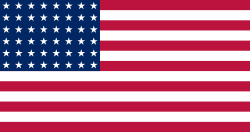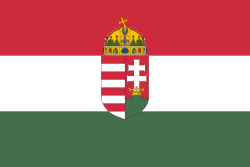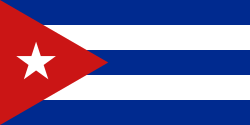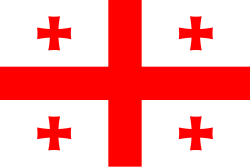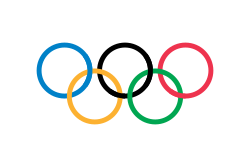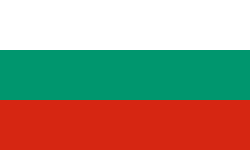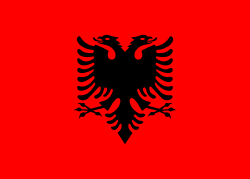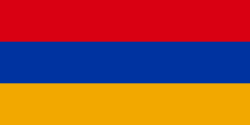Sergej Beloglazov
| Sergej Alexejevič Beloglazov | |
|---|---|
| Narození | 16. září 1956 (66 let) Kaliningrad |
| Alma mater | Kubáňská státní univerzita tělesné kultury, sportu a cestovního ruchu |
| Povolání | zápasník |
| Ocenění | Řád čestného odznaku Řád přátelství mezi národy Řád rudého praporu práce zasloužilý mistr sportu SSSR |
| Příbuzní | Anatolij Beloglazov[1] (sourozenec) |
| Některá data mohou pocházet z datové položky. Chybí svobodný obrázek. | |
| Přehled medailí | ||
|---|---|---|
| zlato | LOH 1980 | volný styl do 57 kg |
| zlato | LOH 1988 | volný styl do 57 kg |
| Mistrovství světa v zápasu ve volném stylu | ||
| zlato | MS 1981 | bantamová váha |
| zlato | MS 1982 | pérová váha |
| zlato | MS 1983 | bantamová váha |
| zlato | MS 1985 | bantamová váha |
| zlato | MS 1986 | bantamová váha |
| zlato | MS 1987 | bantamová váha |
| stříbro | MS 1979 | bantamová váha |
| Mistrovství Evropy v zápasu ve volném stylu | ||
| zlato | ME 1979 | bantamová váha |
| zlato | ME 1982 | bantamová váha |
| zlato | ME 1984 | bantamová váha |
| zlato | ME 1987 | bantamová váha |
| zlato | ME 1988 | bantamová váha |
Sergij Oleksijovič Beloglazov (ukrajinsky Сергій Олексійович Бєлоглазов, rusky Сергей Алексеевич Белоглазов; * 16. září 1956 Kaliningrad, Sovětský svaz) je bývalý sovětský zápasník, volnostylař.
V roce 1980 na olympijských hrách v Moskvě v kategorii do 57 kg a v roce 1988 na hrách v Soulu ve stejné kategorii vybojoval zlatou medaili. Šestkrát vybojoval titul mistra světa a pětkrát se stal mistrem Evropy. Od roku 1990 se věnuje trenérské činnosti, mimo jiné jako trenér ruské ženské reprezentace.
Jeho bratr, dvojče, je Anatolij Beloglazov.
Reference
- ↑ Olympedia. Dostupné online. [cit. 2021-02-28]
Externí odkazy
- Sergej Alexejevič Beloglazov v databázi Olympedia (anglicky)
Média použitá na této stránce
Olympic Rings without "rims" (gaps between the rings), As used, eg. in the logos of the 2008 and 2016 Olympics. The colour scheme applied here was specified in 2023 guidelines.
Olympic Rings without "rims" (gaps between the rings), As used, eg. in the logos of the 2008 and 2016 Olympics. The colour scheme applied here was specified in 2023 guidelines.
US Flag with 45 stars. In use 4 July 1896–3 July 1908. Created by jacobolus using Adobe Illustrator, and released into the public domain. This flag was used during the Spanish-American War.
US Flag with 45 stars. In use 4 July 1896–3 July 1908. Created by jacobolus using Adobe Illustrator, and released into the public domain. This flag was used during the Spanish-American War.
Finská vlajka
US Flag with 48 stars. In use for 47 years from July 4, 1912, to July 3, 1959.
Flag of Hungary, from 6 November 1915 to 29 November 1918 and from August 1919 until mid/late 1946.
Variant version of a flag of Japan, used between January 27, 1870 and August 13, 1999 (aspect ratio 7:10).
(c) I, Cmapm, CC BY-SA 3.0
The flag of the Soviet Union (1955-1991) using a darker shade of red.
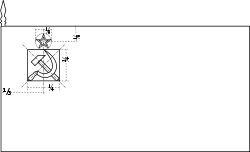
(c) I, Cmapm, CC BY-SA 3.0
The flag of the Soviet Union (1955-1991) using a darker shade of red.

Flag of Iran. The tricolor flag was introduced in 1906, but after the Islamic Revolution of 1979 the Arabic words 'Allahu akbar' ('God is great'), written in the Kufic script of the Qur'an and repeated 22 times, were added to the red and green strips where they border the white central strip and in the middle is the emblem of Iran (which is a stylized Persian alphabet of the Arabic word Allah ("God")).
The official ISIRI standard (translation at FotW) gives two slightly different methods of construction for the flag: a compass-and-straightedge construction used for File:Flag of Iran (official).svg, and a "simplified" construction sheet with rational numbers used for this file.
Olympijská vlajka
Flag of Canada introduced in 1965, using Pantone colors. This design replaced the Canadian Red Ensign design.
Georgian flag in Pantone MS.
This is the national flag of Belgium, according to the Official Guide to Belgian Protocol. It has a 13:15 aspect ratio, though it is rarely seen in this ratio.
Its colours are defined as Pantone black, Pantone yellow 115, and Pantone red 032; also given as CMYK 0,0,0,100; 0,8.5,79,0; and 0,94,87,0.


